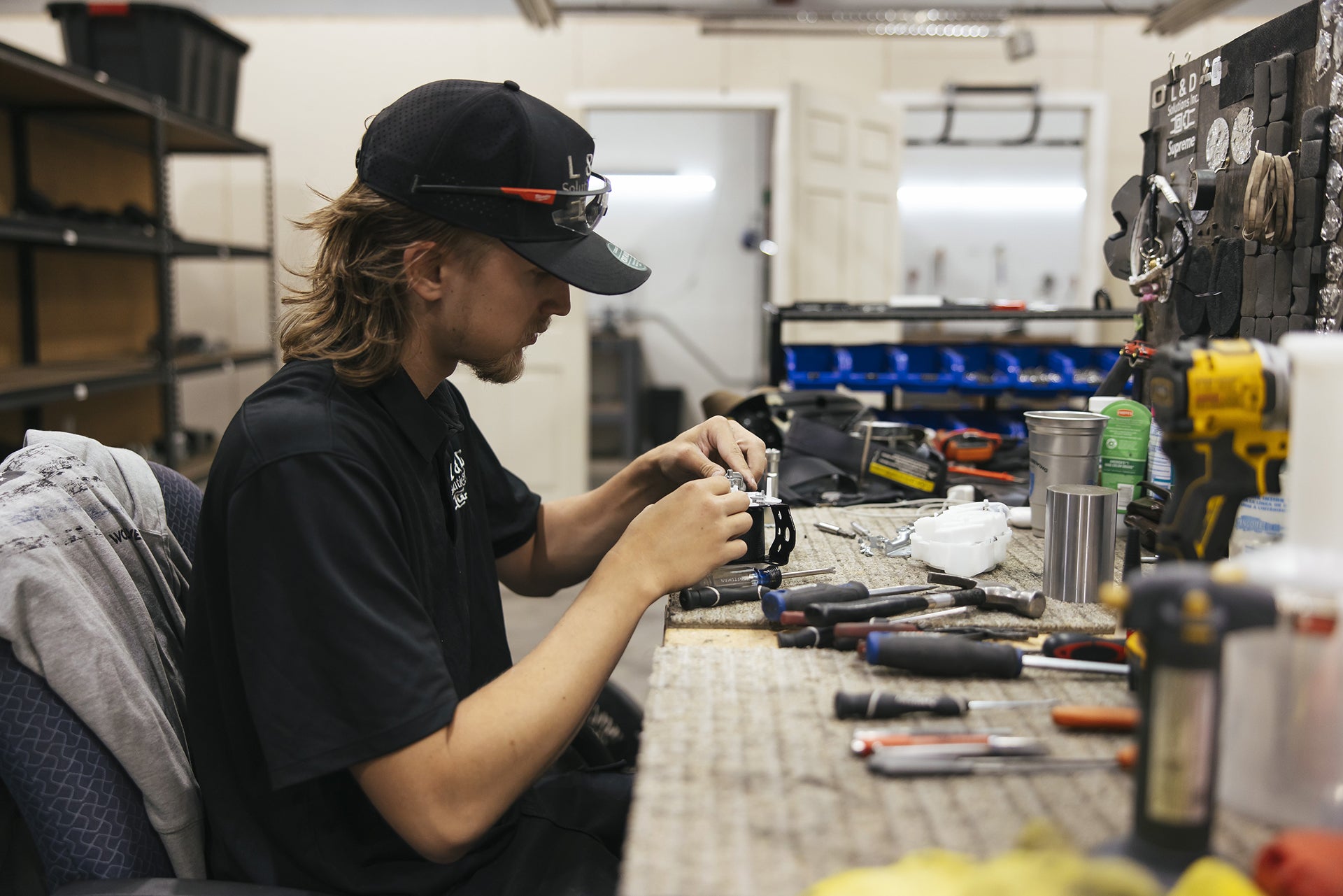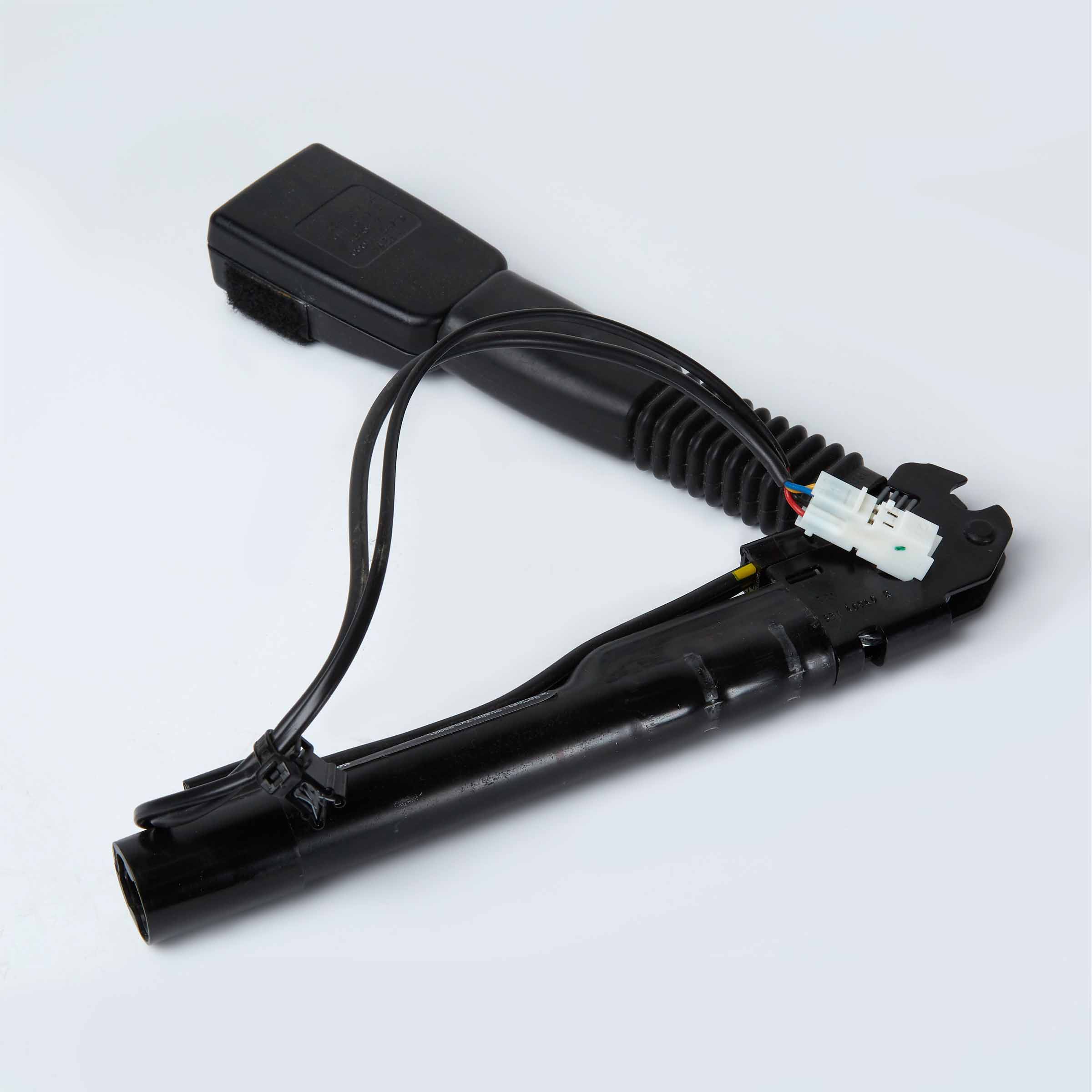You’re driving, the dash glows, and there it is, the airbag warning light. It’s one of those alerts that makes your stomach drop for a reason. When that light stays on, your Supplemental Restraint System (SRS), airbags and seat belt pretensioners, may not work the way they should in a crash.
Here’s the thing. The airbag warning light isn’t a suggestion. It’s your car telling you to pay attention now so you don’t pay more later. At L&D Solutions, we see this every week. Some fixes are simple. Others need skilled diagnostics. Either way, you’re not stuck guessing.
What the Airbag Warning Light Actually Means
When the airbag warning light turns on and stays on after startup, your vehicle’s SRS control module detected a fault. That fault could disable:
- One or more airbags
- Seat belt pretensioners
- The crash detection logic itself
Sometimes the system deactivates only the affected component. Sometimes it shuts down the entire SRS. You won’t know which without reading the fault codes. That’s why a quick scan is step one.
Common Reasons the Airbag Warning Light Comes On
Not all causes are expensive. Not all are obvious. Here are the usual suspects we find in the shop:
- Loose or damaged seat wiring/connectors. Seats move. Wires don’t love that. Under-seat connectors for seat occupancy sensors or pretensioners can loosen.
- Clock spring failure in the steering wheel. This ribbon cable lets the wheel turn while keeping the driver’s airbag connected. When it cracks, the airbag warning light follows.
- Low battery or voltage dips. Weak batteries or recent jump-starts can throw SRS faults.
- Impact/accident history. Even a “minor” bump can trigger a stored event. Some modules lock until reset.
- Moisture or water intrusion. Wet carpets and leaks corrode SRS connectors and sensors.
- Aftermarket mods. Seats swapped? New steering wheel? Audio or remote-start wiring? One bad splice can trip the light.
- Seat occupancy sensor issues. If the car can’t trust who’s in the seat—or their weight—it may disable that airbag.
- Faulty crash/impact sensors. Sensors age. Connectors oxidize. Signals get noisy.
- Module faults. The SRS control unit itself can fail or simply need a proper reset after repairs.
Here’s a quick comparison you can skim:
| Likely Cause | Clues You Might Notice | Risk Level | Typical Fix Path |
|---|---|---|---|
| Loose seat connector | Light after seat moved | Medium | Inspect/secure connectors; clear codes |
| Clock spring | Horn/buttons flaky, light on | High | Replace clock spring; verify driver airbag circuit |
| Low voltage | Recent battery swap/jump | Medium | Charge/replace battery; clear codes |
| Water intrusion | Damp carpet, musty smell | High | Dry/repair leak; clean/repair connectors |
| Aftermarket wiring | Light started after a mod | Medium–High | Correct wiring; restore OEM connections |
| Occupancy sensor | Light with passenger seat use | Medium | Calibrate or replace sensor/mat |
| Impact sensor | Light after bump/curb hit | High | Test/replace sensor; inspect wiring |
| Module fault/locked | Light after crash repair | High | Diagnose; SRS module reset or repair |
Can You Drive With the Airbag Warning Light On?
Short answer: you can drive the car to a shop. You shouldn’t ignore it.
- In many cases, one or more airbags or pretensioners won’t deploy in a crash.
- In some cases, unexpected deployment is possible if wiring is severely compromised (rare, but not a chance you want to take).
- The airbag warning light means your safety margin is lower than it should be.
Get it checked soon. Same week is smart. Same day is better.
Quick Checks You Can Safely Do at Home
A few simple steps—no hero moves, no guesswork:
- Battery health. If the battery is weak or recently disconnected, charge or replace it properly. Then see if the airbag warning light clears after a few key cycles.
- Seat position. Slide the seats fully forward and back once. Gently check that under-seat connectors aren’t tugged or kinked. Don’t unplug anything with the battery connected.
- Look for water. Lift floor mats. Any dampness? Dry it out and fix the leak. Moisture and SRS don’t mix.
- Note recent work. Did the light arrive after stereo, alarm, or steering work? That’s a useful clue. Write it down.
What not to do:
- Don’t clear codes blindly with a generic OBD-II app. Many can’t see SRS codes. You’ll think it’s “fixed” until it isn’t.
- Don’t unplug SRS connectors with the battery connected. That can create new faults—or worse.
How Pros Diagnose an Airbag Warning Light (What We Do at L&D Solutions)
Good diagnosis saves time and money. Our process is deliberate:
- SRS-capable scan. We connect a professional scan tool that reads the SRS module, not just engine codes. We capture fault codes, subcodes, freeze-frame data, and module status.
- Visual and tug test on known hotspots. Under-seat connectors, steering column, clock spring harness, and sensor connectors.
- Circuit testing. Where codes point to a specific loop (e.g., driver airbag squib “too high resistance”), we verify with proper test procedures—no guessing.
- Battery and charging system check. Low voltage causes weird behavior. We rule it out early.
- Component-level checks. Impact sensors, seat occupancy sensors, and pretensioners get individual attention.
- Calibrations where required. Seat occupancy recalibration, steering angle checks, and module resets after component replacement.
- Verification drive. We clear codes, cycle the system, and confirm the airbag warning light stays off under real conditions.
If your seat belt pretensioners fired in a past event or the SRS module is crash-locked, we handle module resets and seat belt repairs in-house. It’s what we do.
What It Might Cost—and Why
Every car and case is different, but here’s how the math usually breaks down:
- Professional SRS diagnostic: typically the cost of a standard diagnostic session. You’re paying for proper tools and the know-how to use them.
- Simple fixes: reseating/repairing a connector, clearing codes after a verified low-voltage event, or calibrating a sensor.
-
Common parts:
- Clock spring: part + labor varies by make; access through the airbag/steering wheel adds time.
- Seat occupancy sensor/mat: can be seat-cover-off work; expect more labor.
- Impact sensor: parts are usually straightforward; corrosion can complicate removal.
- SRS module reset/repair: far cheaper than replacing the vehicle’s module in many cases. That’s one reason customers choose L&D Solutions.
- Seat belt pretensioner repair: if they’ve deployed, we can rebuild/repair to OEM function.
Point is, a clean diagnosis keeps you from buying parts you don’t need. You want the right fix, once.
Preventive Tips So the Light Stays Off
You can’t prevent every failure, but you can stack the odds in your favor:
- Keep connectors happy. Don’t stash bags under seats that can snag wires.
- Mind the moisture. Fix leaks quickly. Dry carpets thoroughly.
- Be careful with aftermarket work. If you’re adding audio, alarms, or remote start, route wires cleanly and avoid SRS harnesses.
- Protect the steering column. When doing wheel or stalk work, use correct procedures. The clock spring is delicate.
- Replace aging batteries early. Voltage dips during cranking can create ghosts.
- After any collision—get a scan. Even at low speed. The airbag warning light may not appear right away, but stored events matter.
FAQs We Hear All the Time
“My light flickers on and off. Is that better?”
Not really. Intermittent faults are still faults. Often it’s a loose connector or a failing clock spring. It won’t fix itself.
“Will disconnecting the battery reset it?”
Maybe briefly. The underlying issue remains, and the airbag warning light usually returns.
“Can I pass inspection with the light on?”
In many regions, no. Even where it’s not explicitly checked, you shouldn’t drive with a compromised SRS.
“Do I need a brand-new SRS module?”
Not always. If it’s crash-locked or corrupt, module reset can be a smarter option. That’s a core service at L&D Solutions.
Why L&D Solutions?
You want this solved correctly. That’s our lane.
- SRS-focused expertise. We diagnose the airbag warning light with the right tools and the right process.
- Seat belt repairs and webbing replacement. OEM-grade materials, tested results, and quick turnaround.
- SRS module resets. Cost-effective alternative to new modules when appropriate.
- Clear communication. We show you the codes, the cause, and the plan. No mystery, no hard sell.
When safety is on the line, experience matters. We fix this problem every day.
What to Do Next (Simple Plan)
- Don’t panic—but don’t wait. Schedule diagnostics.
- Jot down clues. Recent battery issues? Aftermarket work? Water leaks? Share that.
- Get a real SRS scan. Confirm the exact fault.
- Choose the right fix. Repair, recalibrate, or reset—no more, no less.
- Verify. Light off. System armed. You’re back to full protection.
Final Takeaway
If your airbag warning light is on, your car might not protect you when it matters most. You don’t need a lecture—you need a clear path forward. Start with real diagnostics, address the root cause, and verify the system is ready.
Need help? Reach out to L&D Solutions. We diagnose SRS faults, reset modules, and repair seat belt pretensioners and webbing, so the airbag warning light goes off and stays off, the right way.




Leave a comment
This site is protected by hCaptcha and the hCaptcha Privacy Policy and Terms of Service apply.